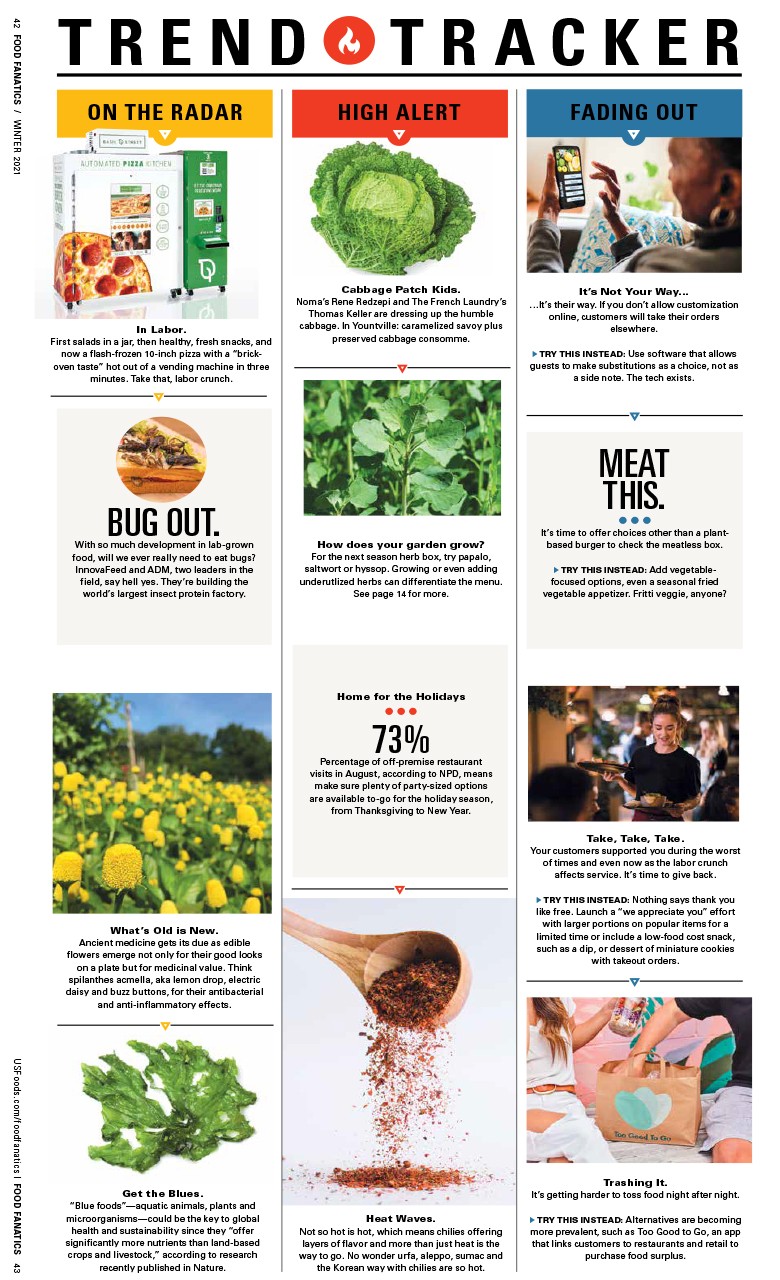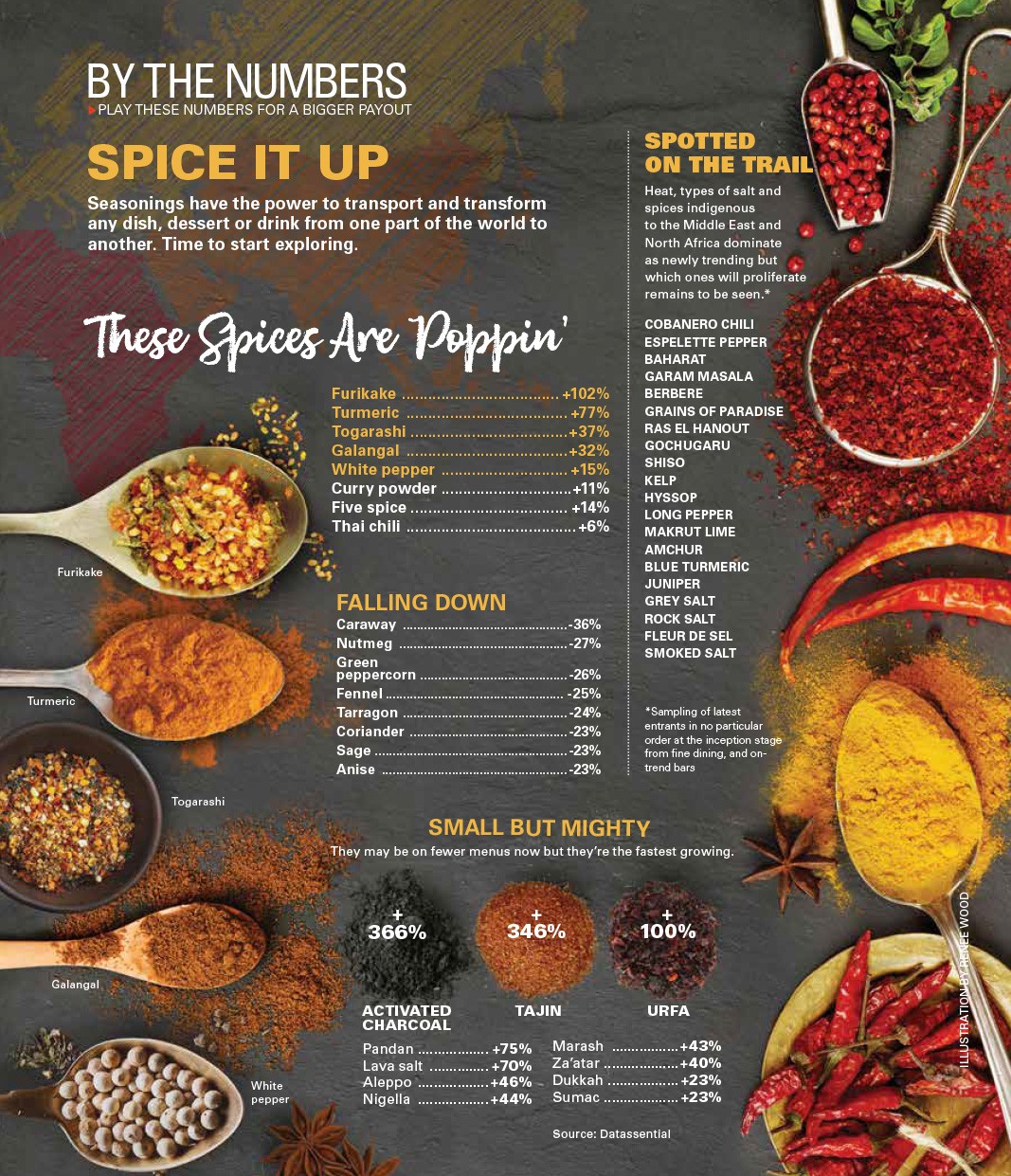Text to Eat
Another way to order delivery
Profitability can be tricky with online ordering, a problem that fuels new technology. The latest efforts connect restaurants directly to customers via texts and messenger platforms as the solution to reducing the cost of third-party services.
Data shows that diners want to order directly from restaurants instead of delivery marketplaces, says Jackie Berg, vice president of marketing at Olo, which powers digital ordering for the restaurant industry through both white label apps and integration of orders from third-party marketplaces. According to Technomic’s 2018 Takeout & Off-Premise Consumer Trend Report, 29% of diners would order via text message, including 40% of 18- to 34-year-olds.
Here’s a look at three services that allow diners to order through text messaging.
The Texthood
› How it Works: Users save a restaurant’s telephone number to their address book, then text when they’re hungry. This triggers Texthood’s AI-based tech to convert the text into an electronic order and initiate a conversation. The platform’s integrated web interface also allows restaurants to send customers a link so they can browse an online menu. First-time users fill out credit card information in a secure web form that’s saved to make future orders faster.
› Why it Works: “This is a really powerful channel (for restaurants), because it’s a way to have a presence on the consumer’s phone without very much friction,” says Adam Sandler, co-founder of Bensen AI, which runs Texthood. Texthood says its service drives up to $10,000 of additional revenue per month at some locations, and the repeat order rate is high – around 80 to 90%. That’s been true for Coreanos, a Korean spot in Boston, which says 10 to 15% of its orders now come via text message, including a sizable increase in large orders. “Our phone line is no longer getting multiple calls at once, and I think that helps with balancing the orders that come in,” says Coreanos co-owner Alex Kim.
TextRestaurants
› How it Works: Texts are sent to an in-restaurant tablet, which rings when an order arrives. Employees reply with custom messages or by clicking pre-formulated quick response buttons such as, “Would you like to pay with cash or credit?” or “Is this pick-up or delivery?” Orders are manually entered into the POS and a secure payment link via PayPal is sent back to the customer.
› Why It Works: “It’s a ready-to-go product that provides independents a low entry point into texting,” says owner Ali Husain, who says the system can be up and running in two days. The open-dialogue channels also allow employees to upsell – “Do you want to add X product for an extra $2?” – in a non-intrusive way. So far, the bulk of TextRestaurant’s business has been in the Midwest – but clients such as Hello Faz Pizza in Ann Arbor, Michigan, which has a family connection to Husain, says a subset of its customers have become fiercely loyal to the platform, often increasing their order sizes over time. To appeal to larger chains, TextRestaurants has developed a more advanced POS-based system that uses AI to convert text messages into menu orders.
Say2eat
› How It Works: Say2eat works with restaurant clients to embed a mobile ordering system within Facebook’s Messenger app. Customers type the restaurant’s name into Messenger, click the restaurant’s icon and are presented with a digital carousel of menu options, which can be customized much like a menu on a digital kiosk. After payment information is collected, the order is fed directly into a POS system, thus reducing the need for extra employee training.
› Why It Works: Since Facebook Messenger is already ubiquitous, diners tend to be comfortable giving it a try. Plus, it’s sticky. According to Say2eat CEO Li-ran Navon, only 20% of customers who start an order online actually complete the transaction. With Say2eat’s system, he says it’s as high as 57%. Plus if a restaurant doesn’t have a delivery operation, Say2eat’s system can call a carrier to deliver the food at a flat rate, which is 50% lower than most outside delivery platforms charge who are taking commissions from the orders. Growing chains like the Florida-based Cuban Guys says the service is allowing them to preserve the profits they once handed over to third-party delivery services. “Some older diners are intimidated by online ordering; however, they’re comfortable using Messenger because they already use it to text their friends,” Cuban Guys co-owner Jorge Llapur says. “It’s allowed us to draw new customers to our delivery options.”



